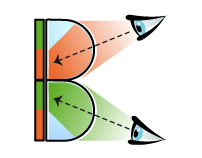Solar film teases energy independent smartphones


French solar energy start-up Wysips has been turning heads at the CTIA Wireless show in Orlando with its transparent photovoltaic film. It says that the film has the potential to make smartphones, tablets and other gadgets energy self-sufficient.
The company is actively pitching its technology to cellular carriers, display makers and equipment manufacturers, according to reports. Its goal is for the film to be integrated into wireless devices within a year (assuming it isn't acquired).
The film is designed to be thin enough so that it doesn't darken LCD screens, and could provide a charge of 250mW. Although, reviewers observed that screens appeared darker than usual.
I also wonder whether it could accommodate the oil-resistant coating that is found on many touchscreen phones, and built into glass from suppliers.
The potential applications of Wysips’ technology extend well beyond electronics: The flexible film layers on top of glass, fabrics, plastic, and even sails, according to the company’s Web site.
Indeed, Wysips promises to be revolutionary: its Web site invokes the 1960s off-Broadway counter-culture hit Hair with the saying, “let the sun shine in.” You’ll just need to have a big enough window.
It takes six hours of direct sunlight to charge an average cell phone battery, the company told LAPTOP magazine. I’d imagine it would take a far longer interval if your phone is sequestered in your pocket throughout the day as mine often is.
Wysips president Ludovic Deblois demoed the technology to attendees at CTIA on a retrofitted iPhone 4. Deblois proved his concept, showing how indoor lighting can even provide a charge.
In practice, Wysips' technology may allow device makers to further shrink form factors, but doing so would make battery life less predictable in an era when customers expect superior battery life. Delaying the amount of time a customer can spend between charges could be a winner.
Integrating solar technology into laptop or tablet where PC hardware uses power more greedily makes even greater sense. They don't go in your pocket either.
If you are expecting a smartphone that charges itself while you eat your cornflakes, you’ll be waiting for a technological Godot. If you are looking for a modest improvement in battery life, this may a feature that you want to have with your next phone.
Investors will decide what's best
Layering photovoltaic film on top of an LCD screen sounds like a good idea at face value, but I’m wondering whether we are witnessing a phenomenon that sales people refer to as “trade show glow.” You may even be experiencing it now - virtually.
Ideas seem novel or disruptive on the conference floor, but the buzz fades after everybody goes home. Conference calls are scheduled, executives and engineers powwow, and then – silence.
I won’t discount its potential, but the film may end up being a better fit for niche products such as military tents or survival gear. I recall when the introduction of OLED technology was going to usher in TVs that are unbelievably thin.
That was back in 2001, and I’m still waiting for it to happen. Its more likely that Wysips' investors will decide the direction of its revolution before it ever really changes how consumer electronics are powered.
This post was originally published on Smartplanet.com